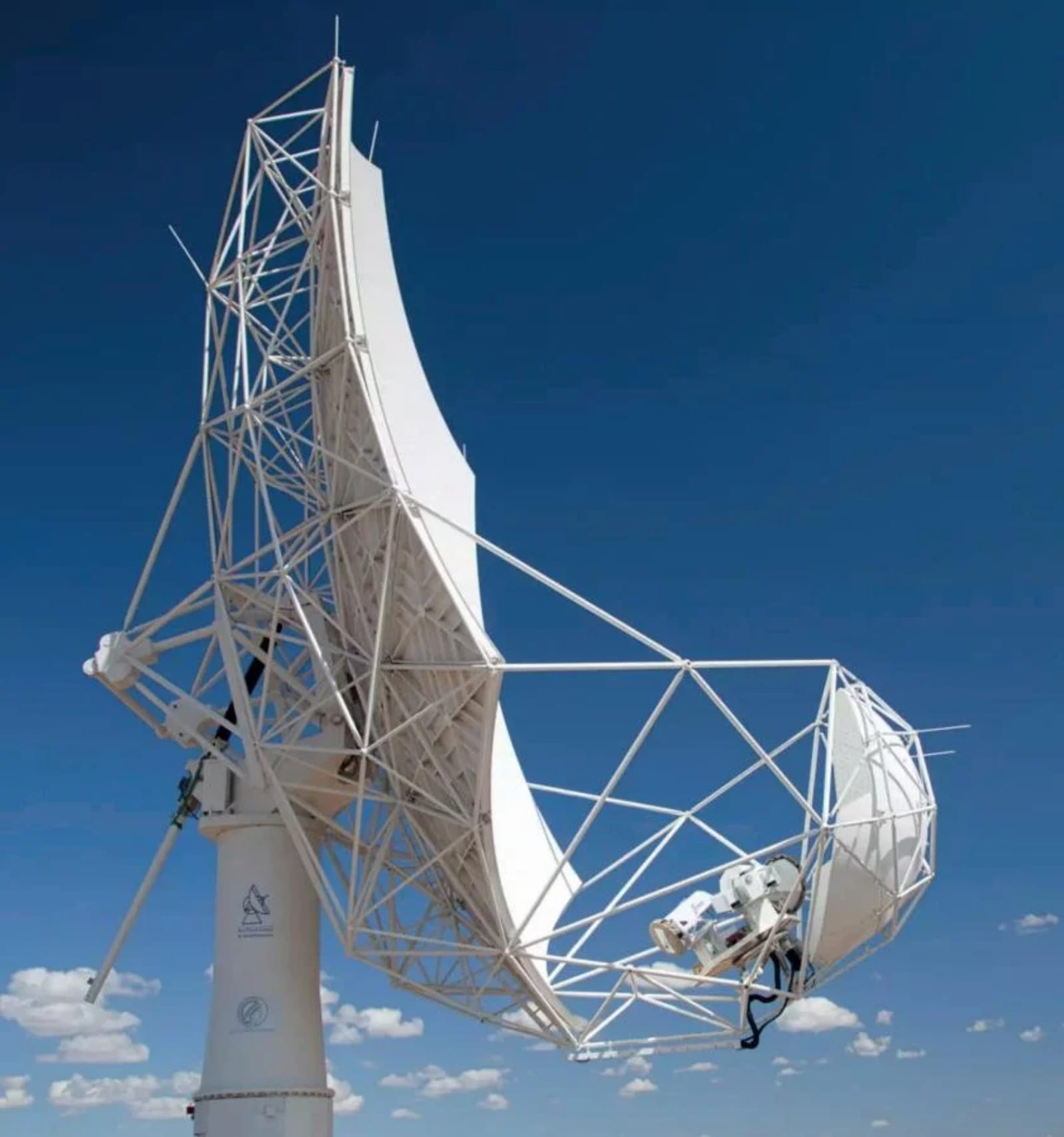Prototype models towards world’s largest radio telescope obtains ‘first light’
Including the telescope hosting countries, there are over ten countries -- Canada, China, Germany, France, India, Italy, the United Kingdom are among others participating in this multi-billion dollar mega science project.
 Milky Way’s galactic plane is clearly visible, with the brighter spots of the Centaurus A galaxy and the Sun on the right of the picture. Credit - SKAO
Milky Way’s galactic plane is clearly visible, with the brighter spots of the Centaurus A galaxy and the Sun on the right of the picture. Credit - SKAOThe first prototype dish antenna which will be replicated towards building the world’s largest radio telescope has achieved results from the first light.
Square Kilometre Array (SKA) Observatory is the proposed telescope which is being planned to be constructed across the two continents, in South Africa and Australia. A total of 1.31 lakh low-frequency antennas will form the SKA-Low telescope in western Australia, which will help scientists to study the first billion years and the evolution of the Universe. Whereas, there are 197 mid-frequency antennas proposed for the SKA-Mid telescope in South Africa. Once built, SKAO will be the most powerful radio telescope cable of peering upto 3,000 trillion km into the Universe to study galaxies and stars in greater detail, test theories of gravity and more.
Including the telescope hosting countries, there are over ten countries — Canada, China, Germany, France, India, Italy, the United Kingdom are among others participating in this multi-billion dollar mega science project.
 SKAMPI was deployed on one of the dish antennas of the existing facility of the South African Radio Telescope Observatory. (Credit – SKAO)
SKAMPI was deployed on one of the dish antennas of the existing facility of the South African Radio Telescope Observatory. (Credit – SKAO)
In December last year, India joined the international consortium and has committed to contribute a sum of Rs. 1,250 crore.
In the ongoing construction phase, engineers and scientists from the SKA member countries are building prototypes of systems and technologies to perform tests and validation.
One such dish prototype, named SKAMPI, obtained the ‘first light’, that is the desired results during the testing phase. Funded by the Max Planck Society, SKAMPI captured the images of the southern sky at 2.5GHz wavelength.
” The images have revealed a lot about the characteristic radio emission with the Milky Way in addition to the external galaxies like Centaurus A,” SKA officials said.
During this prototype testing phase, SKAMPI has delivered data of high quality and it would be used to refine the design of the SKA-Mid dishes.
“The significance of the image is the validation that the station is working as expected. This will help to accelerate the verification program in preparation for the first stage of SKA-Low telescope delivery,” said Marco Caiazzo, SKA-Low Station Integration Engineer.
Some of the testing mechanisms developed for SKAMPI could be used to qualify the new SKA-Mid dishes.
SKA officials said that after completing the required testing, SKAMPI will enter full-scale science operations towards the end of 2024 and that the South African and German scientific teams could access the scientific data.
In western Australia, the first antenna of the SKA-low was installed in March this year.







